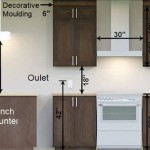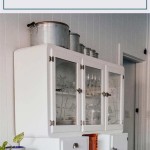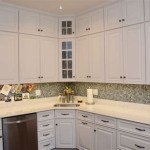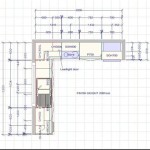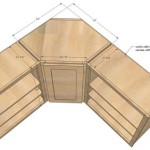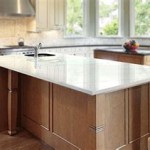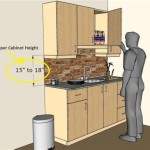How to Make Concrete Kitchen Cabinets
Concrete kitchen cabinets are a growing trend in home décor, adding a modern and industrial touch to any space. Their durability, unique aesthetic, and customizable nature make them an attractive option for homeowners looking for something different. Making concrete kitchen cabinets might seem daunting, but with careful planning and the right tools, it is a DIY project achievable for skilled individuals.
1. Planning and Preparation
Before embarking on creating concrete kitchen cabinets, meticulous planning is essential. The first step involves determining the cabinet dimensions and design. Sketching out a detailed plan will ensure that the cabinets fit seamlessly within the kitchen layout. Next, decide on the concrete mix recipe. Standard concrete mixes are readily available, but for a smoother finish, consider using a mix specifically designed for countertops or a pre-mixed concrete product. Choose a mold material that will withstand the weight of wet concrete and allow for easy removal. Wood or plastic molds are common options.
Once the design is finalized, prepare the workspace. Ensure ample space for mixing concrete, pouring, and curing. Protection against dust and spills is essential as concrete is messy. A protective covering for the floor and surrounding areas is recommended. Gather all necessary tools, including mixing buckets, trowels, screeds, a rubber mallet, and safety gear like gloves and eye protection.
2. Molding and Pouring Concrete
Once the workspace is set up, it's time to assemble the molds. For intricate designs, consider using plywood or melamine boards that can be cut to shape. Be sure to secure the molds together tightly to prevent leaks. To ensure a smooth finish, apply a mold release agent to the inside of the mold. This will prevent the concrete from sticking and allow for easy removal. Next, prepare the concrete mix according to the manufacturer’s instructions. For optimal results, use a low water-to-cement ratio for stronger and more durable cabinets.
Pour the concrete mixture into the molds carefully, ensuring that it is distributed evenly. Use a trowel or screed to level the concrete and remove air bubbles. Tap the molds gently with a rubber mallet to eliminate any trapped air. Allow the concrete to cure for at least 24 hours. This process can be accelerated by using a concrete curing blanket or leaving the concrete in a warm, humid environment. Once cured, carefully remove the molds. If there are any rough edges, smooth them with sandpaper.
3. Finishing and Installation
After the molds are removed, the surface of the concrete cabinets can be finished. Concrete can be polished to a smooth, glossy finish or left with a more rustic, textured look. Apply a sealer to protect the cabinets from moisture and stains. A sealant also enhances the color depth and adds a protective layer. Various sealants are available, including epoxy, polyurethane, and acrylic. Choose one suitable for kitchen environments and apply it according to the manufacturer's instructions.
Once the sealant is dry, the cabinets are ready for installation. Measure the cabinet locations carefully and mark the wall for drilling. Use appropriate fasteners to secure the cabinets to the wall or countertop. Attach doors and hinges, and install drawer slides. Hardware like knobs and pulls can be added to complete the installation. For a seamless look, consider painting the cabinets or applying a stain for a natural color.
4. Considerations for Concrete Kitchen Cabinets
While concrete kitchen cabinets offer a unique visual appeal and durability, there are some considerations to keep in mind. Concrete is a heavy material, so ensure the walls and supports can withstand the weight. Carefully plan the cabinet design to distribute the weight evenly. Concrete can be susceptible to scratches and chips. Use caution when placing heavy objects in the cabinets to avoid damage. While concrete is moisture-resistant, it is not waterproof. Avoid prolonged exposure to water and clean spills promptly.
Concrete kitchen cabinets can be a stunning addition to any home. With proper planning, preparation, and construction techniques, creating these cabinets is a rewarding DIY project. The final product will be a unique and durable statement piece that will stand the test of time.

Concrete Kitchen Table Monolithic How To Construction New Looks Stylish Design

Manual Construction Techniques Building Concrete Kitchen Cooking Table

Amazing Smart Construction Techniques Building Concrete Kitchen Cooking Table

Steal This Look A Low Cost Kitchen For Serious Chefs Remodelista

Advantages Of Concrete As A Kitchen Countertop Material

Diy Concrete Countertop Gray House Studio

The Masonry Kitchen

Homemade Modern Ep86 Kitchen Cabinets

Diy Concrete Countertops Part 2 Of The Total Kitchen Series

How To Make A Concrete Countertop For Your Kitchen Or Garage Work Diy Step By
Related Posts

